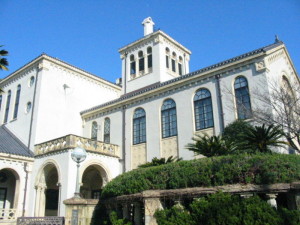Third day in Tokyo – ICABS, Tokyo University Shibuya Campus
The manuscript team is adding new materials daily including astral texts into the database. It is such an honor to meet in person those dedicated researchers working for a project that may last possibly “fifty, sixty years” — if they continue to receive funding! By comparison, the Nepal-German Manuscript Preservation Project lasted over thirty years and it will at least another decade to complete the cataloguing. Talking about vision and dedication!
Today I spent most of the time reading the manuscripts of the different translations of the 起世經 (cf. Aggaññasutta) which all give an extremely interesting, detailed (and according to Gombrich, satirical) account of the origin, rise, decay and destruction of the world. Although its horrific apocalyptical vision never had quite the same effect to the believers as the Book of Revelation, the cosmogony and cosmology were accepted as foundation of Buddhist astronomy throughout the history of Buddhism. I am surprised how little scholarly work has been done on this important text which used to hold great importance, though nowadays forgotten as it apparently fell out of favor.
While going through the Kamakura period manuscripts, I stumbled upon a zodiac-nakṣatra chart 二十七宿十二宮圖 whose data are different from all the editions I have seen so far. It is anomalous in many ways but it can’t be just scribal errors because it was copied out so neatly and carefully.
Spent a great evening with K. Lam, a fellow Hongkonger who is an expert on Nishda and Kyoto School. Me a philologist and he a philosopher, I thought we would both have little to say with the fear that something very dumb may come out of our mouths. But it turned out rather pleasant; I suppose frankness and openness are always the keys. Apparently he is the only faculty member of Tokyo University from Hong Kong. And apparently so am I at Kyoto University by this coming fall. I was given a glimpse of all the extraordinary works he is doing — teaching six classes per week, editing a journal and running an association.

